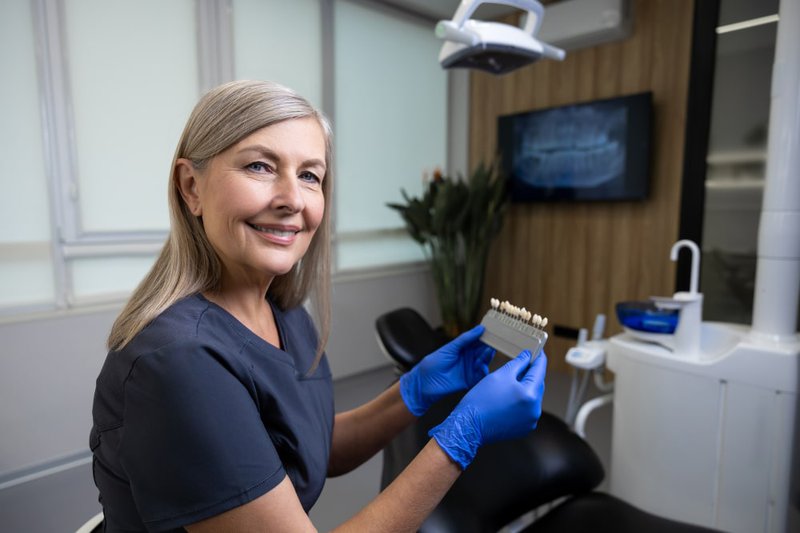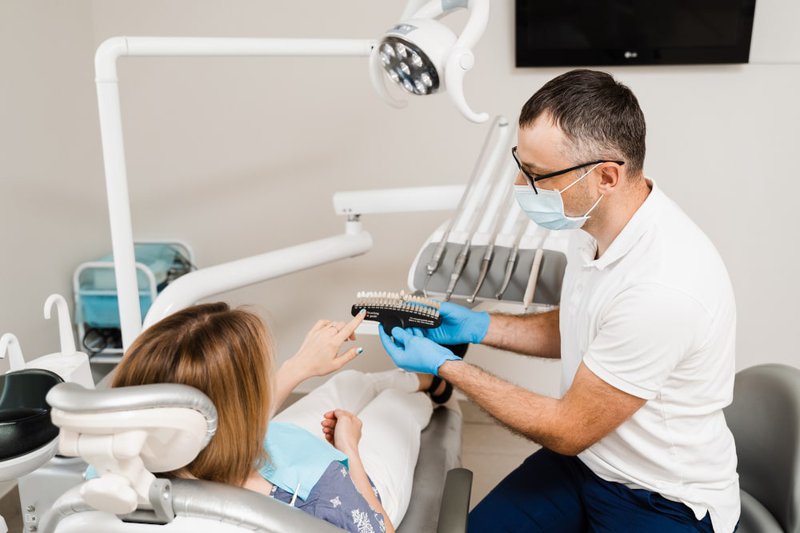
How Much Do Veneers Cost in Ontario and What Affects the Price?
Key Takeaways
- Veneer prices vary significantly across Ontario, largely based on the material (composite vs. porcelain), clinic location, and dentist expertise.
- Porcelain veneers typically cost more than composites due to their durability and lifelike aesthetics.
- Most insurance plans in Canada do not cover veneers unless medically necessary.
- Urban areas like Toronto usually have higher veneer costs than smaller Ontario cities.
- Financing options are commonly available, making veneer treatments more accessible over time.
The price of dental veneers in Ontario depends on multiple factors, but one of the most influential is the material used. There are two primary types: composite veneers and porcelain veneers. Clinics across Ontario offer a broad price range due to variations in location, overhead costs, and dentist expertise. However, specific cost details often remain unpublished unless requested directly from the clinic.
How does the type of veneer affect the total price?
The type of veneer you choose — composite or porcelain — has a direct impact on both the initial cost and long-term value. Here's why:
Durability and Longevity
- Composite veneers generally last 5 to 7 years.
- Porcelain veneers may last 10 to 20 years, depending on care and bite pressure.
Aesthetics and Craftsmanship
- Porcelain veneers offer more natural translucency and texture, mimicking real enamel.
- Composite veneers are more prone to staining and may appear less lifelike over time.
Maintenance and Repairs
- Composite materials are easier and cheaper to repair, but more likely to chip.
- Porcelain veneers, while costlier to replace, are less likely to require frequent repairs.
Pros and Cons Table
| Feature | Composite Veneers | Porcelain Veneers |
|---|---|---|
| Cost | Lower upfront cost | Higher upfront cost |
| Durability | 5–7 years | 10–20 years |
| Aesthetics | Less natural look | Highly natural look |
| Stain Resistance | Susceptible to stains | Highly stain-resistant |
| Repairability | Easy to repair | More complex to repair |
| Application Process | Single visit possible | Typically requires multiple visits |
In the words of Dr. Amir Guorgui, BSC, DMD, MACSD, a leading Ontario cosmetic dentist:
"Porcelain veneers are a long-term investment in both durability and aesthetics. While the initial cost is higher, the payoff is in how well they age over time."
What factors make veneers more expensive in certain clinics?
It’s not uncommon to see big price differences between dental clinics — even within the same city. Several key factors contribute to these variations:
Location and Overhead Costs
Clinics in major urban centers like Toronto or Mississauga typically face much higher expenses related to rent, staffing, and local taxes. These added costs are often reflected in their treatment prices.
By contrast, practices based in smaller cities or suburban areas — such as Vaughan or Kingston — generally benefit from lower overhead, allowing them to offer more competitive pricing without compromising on quality.
In fact, local market data shows that downtown clinics in major cities can charge 25–30% more than their suburban or rural counterparts.
That’s one reason why many patients from across the GTA choose Mapleridge Dentistry in Vaughan — top-tier care at a more accessible price point.
Dentist Experience and Specialization
- Dentists with advanced training in cosmetic dentistry or prosthodontics typically charge more for their expertise.
- Board-certified dentist who teach or publish research may have a premium pricing model.
The extra cost often reflects not just the dentist’s time, but their reputation, technique, and case success rate.
Lab Costs and Material Sources
- High-end clinics often work with top-tier dental labs that use advanced digital technology and premium ceramics.
- Veneers fabricated overseas or with lower-cost materials may bring prices down — but potentially at the expense of longevity or aesthetics.
Customization Level
- More expensive veneers are usually individually designed to match the patient’s face, bite, and smile dynamics.
- This involves multiple consultations, mock-ups, digital imaging, and colour shading tests.
Material Quality
- Even among porcelain veneers, brands like IPS e.max or Lumineers come with differing costs and warranties.
- Some materials offer enhanced translucency and strength, impacting final pricing.

Are veneers covered by insurance in Canada, and under what conditions?
In most cases, veneers are considered cosmetic procedures and therefore not covered by provincial or private dental insurance plans. However, there are important exceptions.
When Insurance Might Cover Veneers
- Accidental trauma: If a tooth is damaged in a car accident or sports injury, coverage may apply.
- Developmental disorders: Conditions such as amelogenesis imperfecta or enamel hypoplasia might justify veneers as a medical necessity.
- Restorative needs: When a veneer is used as part of a broader reconstructive treatment (e.g., for broken or worn teeth), insurers may partially reimburse the cost.
In general, preauthorization is key. Submitting diagnostic evidence and written statements from your dentist can increase the chance of partial coverage.
How many veneers do people typically need for a smile makeover?
A smile makeover isn’t a one-size-fits-all process. The number of veneers required depends on the individual’s smile goals, tooth visibility, and oral health status.
Common Treatment Plans
- 2 veneers: Ideal for minor corrections on front teeth (e.g., chips or discolouration).
- 4 veneers: Covers the central and lateral incisors, often used to improve midline symmetry.
- 6 veneers: Includes canines, providing a fuller aesthetic effect.
- 8 veneers: Extends to the premolars, creating a wide, even smile line.
The Aesthetic Zone Concept
Dentists often refer to the "aesthetic zone" — the area visible when you smile naturally. For most adults, this includes 6 to 8 upper front teeth, making those the most common targets for veneers.
Cost Impact Per Unit
- Veneer pricing typically decreases slightly per unit in larger treatment plans due to package pricing.
- For example, the cost of 8 veneers might not be four times the cost of two; some clinics offer bundled or promotional rates.
In case studies across Ontario, patients undergoing full smile transformations often opt for 6 or 8 veneers to achieve consistent colour and shape across the visible teeth.
Do veneers cost more in Toronto than in smaller Ontario cities?
Location plays a significant role in dental veneer pricing, and Ontario is no exception. While Toronto is often associated with higher living costs overall, this also extends to cosmetic dental procedures like veneers. Let’s explore how pricing differs across urban and smaller communities in Ontario.
Urban vs. Rural Price Dynamics
In larger cities such as Toronto, Ottawa, and Mississauga, the overhead costs for dental clinics are considerably higher. These expenses include:
- Commercial rent and utilities in premium locations
- Staffing costs, especially in competitive urban markets
- Advanced dental equipment and technologies that many urban clinics invest in to stay competitive
Meanwhile, clinics in smaller cities and towns like Windsor, Barrie, or Kingston tend to operate with lower overhead. This often allows them to offer veneers at more affordable rates.
Comparative Pricing Across Ontario
While specific figures vary, the general trend looks like this:
| Location | Estimated Price Range (Composite & Porcelain Veneers) |
|---|---|
| Toronto | Higher end of range due to operational costs |
| Ottawa | Moderate to high, depending on neighbourhood |
| Windsor | Generally lower, with fewer luxury fees |
| Sudbury | Low to moderate, fewer high-end options |
Why the Difference?
Even for the same veneer material, location can affect costs by several hundred dollars per tooth. However, this doesn’t mean higher cost guarantees better quality. Sometimes, smaller clinics partner with top-tier dental labs or have highly experienced cosmetic dentists. As such, evaluating quality independently of location is key.
How long do veneers last and how does that affect value over time?
When deciding whether veneers are worth the investment, it’s crucial to look beyond the upfront cost. Durability and value over time are central to making a smart decision.
Veneer Lifespan: What the Research Shows
- Composite veneers typically last 5 to 7 years.
- Porcelain veneers can last 10 to 20 years, depending on maintenance and bite alignment.
A 2022 study published in Dental Materials assessed the 10-year clinical outcomes of feldspathic porcelain and composite veneers. The findings revealed that porcelain veneers had an annual failure rate (AFR) of only 1.2%, compared to 4.1% for composite veneers. These results confirm the superior long-term durability of porcelain veneers in aesthetic dentistry.

Cost-Per-Year Analysis
Let’s consider the concept of cost amortization — or how the cost of veneers spreads over their lifespan.
| Veneer Type | Average Lifespan | Cost-Amortization (Per Year) |
|---|---|---|
| Composite | 5–7 years | Moderate initial cost, higher over time due to repairs/replacement |
| Porcelain | 10–20 years | Higher upfront cost, lower long-term cost per year |
Factors That Affect Longevity
- Oral hygiene habits: Brushing, flossing, and avoiding abrasive toothpaste extends lifespan
- Bite issues or grinding: May require a night guard to prevent damage
- Diet choices: Hard foods and excessive staining agents (e.g., coffee, red wine) reduce longevity
When Replacement is Needed
Over time, veneers may show signs of:
- Discolouration (especially with composites)
- Marginal gaps
- Chipping or cracking
- Gum recession
Porcelain veneers can often be replaced without full removal of the underlying tooth structure, which simplifies future procedures.
Can financing or payment plans help manage veneer costs?
Yes — many Ontario clinics offer flexible financing solutions that make cosmetic procedures like veneers more accessible. Rather than paying several thousand dollars upfront, patients can break the total into monthly payments.
Common Financing Options in Ontario
- Third-Party Financing (e.g., PayBright, Dentalcard):
- Fixed monthly payments over 6–60 months
- Interest rates range from 0% (promo) to 12–15%
- In-House Payment Plans:
- Offered by some clinics directly
- Usually 3–12 months interest-free
- Health Credit Lines:
- Through banks or credit unions
- Tax-deductible interest for medical purposes in some cases
Tips for Smart Financing
- Ask for a complete cost breakdown before agreeing to any plan
- Review interest charges and prepayment penalties
- Compare third-party vs. clinic-managed options
Our Payment Plans
At our clinic, we offer flexible payment plans to ensure that you can prioritize your dental health and aesthetics without the stress of immediate full payment. We understand that financing is important, so we provide transparent and easy-to-understand terms. With our options, you can manage your treatment costs in a way that suits your budget, making dental care more accessible and manageable.
For more details, you can visit our dental financing page.
What Makes the Experience Positive?
- Clear communication of costs and options
- Customized treatment planning
- Realistic expectations and maintenance guidance
Veneers are a big investment, but for many Ontarians, the confidence boost and professional results outweigh the financial hurdle — especially with research and planning.
Are There Alternatives to Veneers That Cost Less?
When people explore cosmetic dental treatments, veneers often appear as a premium option — but they're not the only path to a better smile. For patients seeking cost-effective alternatives with similar aesthetic outcomes, three treatments frequently come up: dental bonding, teeth whitening, and orthodontic aligners. Each offers different benefits, limitations, and costs, making them worth evaluating.
Professional Whitening
If your main goal is a brighter smile without altering tooth shape, whitening could suffice.
Pros:
- Non-invasive
- Substantially cheaper
- Quick results with in-office treatments
Cons:
- Doesn’t correct shape, chips, or spacing
- Results fade over time
- Not effective on crowns, fillings, or intrinsic stains
Clear Aligners (e.g., Invisalign)
For patients with spacing or alignment issues, aligners can subtly transform a smile without permanent alterations to teeth.
Pros:
- Corrects bite and alignment issues
- Removable and discreet
- Can improve function as well as aesthetics
Cons:
- More expensive than bonding/whitening
- Takes longer — usually several months to years
- Requires patient compliance
| Treatment | Cost Level | Longevity | Main Purpose | Suitability |
|---|---|---|---|---|
| Veneers | High | 10–20 years | Aesthetic reshaping/whitening | Patients seeking total smile transformation |
| Whitening | Low | 6–12 months | Brightening only | Colour improvement only |
| Aligners | Medium-High | Permanent (if maintained) | Correcting alignment | Orthodontic corrections |

Is It Cheaper to Get Veneers Done Outside Canada?
Dental tourism has become a popular option for Canadians seeking affordable cosmetic dentistry. Countries like Mexico, Turkey, and Thailand advertise significantly lower prices for veneers — but is the savings worth the risk?
Why It’s Cheaper Abroad
Countries with lower labour and operational costs can offer veneers at 30–70% less than Canadian clinics. For example, a patient might pay less for a full set of porcelain veneers in Istanbul than for half that amount in Toronto.
Cost-Saving Factors:
- Lower clinic overheads and dental lab fees
- Favourable currency exchange rates
- Government subsidies for medical tourism (in some countries)
Risks and Considerations
Despite the price appeal, there are serious considerations:
- Quality assurance: Not all clinics follow North American sterilization or regulatory standards.
- Follow-up care: Post-op issues can arise after returning to Canada, and local dentists may not correct overseas work.
- Travel costs: Flights, hotels, and lost work time can add up.
- Warranty voids: If something fails, flying back for repairs isn’t always feasible.
What Are Common Myths About Veneer Pricing in Ontario?
Myth #1: "Veneers Are Only for the Wealthy"
Reality: While veneers can be costly, many clinics offer financing or phased treatment plans to make them accessible. Plus, alternative treatments like bonding offer similar results at a lower price point.
Myth #2: "Insurance Always Covers Veneers"
Reality: Most insurance plans in Canada do not cover veneers unless they're required for medical reasons (e.g., repairing trauma). Cosmetic procedures are usually paid out-of-pocket.
Myth #3: "All Veneers Cost the Same"
Reality: Prices vary based on:
- Dentist’s experience
- Location of the clinic (Toronto vs. Windsor)
- Type of veneer (composite vs. porcelain)
- Customization level
Myth #4: "Veneers Last Forever"
Reality: Veneers last 10–20 years on average. They can crack, wear down, or need replacement if oral hygiene is poor or habits like teeth grinding persist.
Myth #5: "It Doesn’t Matter Where You Get Veneers"
Reality: Veneers are highly technique-sensitive. Choosing a skilled, experienced cosmetic dentist — preferably one accredited in Canada — directly affects the outcome and longevity of your results.
Understanding what affects the price and longevity of veneers helps Ontarians make informed decisions. Don’t let myths shape your expectations — ask the right questions, compare clinics, and prioritize safety over shortcuts.
Clinic Quality Matters
At Mapleridge Dentistry, we understand how a beautiful, confident smile can transform your life. If you’re considering veneers to enhance your smile, our team is here to guide you through every step of the process, from consultation to final results. With our expertise and commitment to quality care, you can trust that your smile is in good hands. Schedule your consultation today and discover how veneers can give you the smile you’ve always dreamed of!

